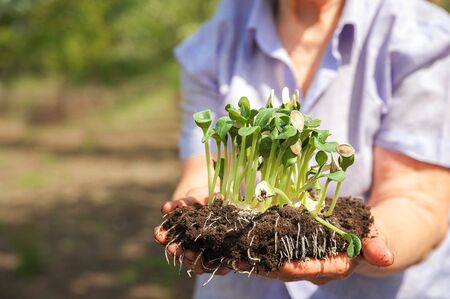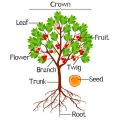Why Grow Your Own Salad Garden?
Starting your own salad garden is one of the easiest and most rewarding ways to make a positive impact on both your health and the environment. By growing your own greens and veggies, you’re taking an active step toward reducing your carbon footprint—no more cross-country shipping or plastic-wrapped produce from the grocery store. Instead, you’ll enjoy freshly picked salads that are bursting with flavor and nutrients, straight from your backyard or even a sunny windowsill. Home gardening is also a sustainable practice, helping to cut down on food waste and supporting local pollinators. Plus, when you grow your own ingredients, you know exactly how they’re grown—free from pesticides and packed with goodness. It’s not just about eating better; it’s about living better and caring for the planet at the same time.
2. Picking the Right Spot: Sun, Soil, and Containers
Choosing the perfect location is the first step to a thriving and sustainable salad garden. Most salad greens—like lettuce, arugula, and spinach—love sunlight. Aim for a spot that receives at least 6 hours of direct sun each day. If you’re gardening in a city or suburb, balconies, patios, or even sunny window sills can work wonders. For those with limited space, don’t hesitate to go vertical with rail planters or wall-mounted containers.
Sunlight Requirements for Common Salad Greens
| Salad Ingredient | Minimum Hours of Sunlight Needed |
|---|---|
| Lettuce | 4-6 hours |
| Spinach | 4-6 hours |
| Arugula | 6+ hours |
| Kale | 6+ hours |
Soil: The Foundation of Healthy Greens
Sustainable gardening starts from the ground up. Salad greens thrive in well-draining, nutrient-rich soil. If you’re planting directly in the ground, mix in organic compost to boost fertility and water retention naturally—skip chemical fertilizers for a more eco-friendly approach. For raised beds or containers, choose an organic potting mix or create your own blend using local compost and coconut coir. This not only supports plant health but also reduces your environmental footprint.
Quick Soil Checklist for Beginners:
- Rich in organic matter (add compost!)
- Moist but not soggy—ensure good drainage
- No recent use of synthetic pesticides or herbicides
Container Gardening: Easy & Sustainable Options
If you’re short on yard space or want to grow salad greens year-round, container gardening is an excellent option. Use repurposed materials like old buckets, wooden crates, or food-safe recycled plastic pots. Just ensure they have drainage holes! Container gardens are easy to move around for optimal sunlight and can be brought indoors during colder months, extending your growing season while minimizing waste.
Sustainable Container Ideas:
- Mason jars for microgreens on kitchen counters
- Burlap sacks for patio lettuce mixes
- Upcycled wooden boxes for mixed greens by the doorstep
Selecting the right spot—and using eco-conscious methods—ensures your first salad garden is both successful and gentle on the planet.

3. Fast and Easy Salad Greens to Grow
If you’re eager to enjoy fresh, homegrown salads without a long wait or complicated gardening routines, start with salad greens that are both quick-growing and forgiving for beginners. Lettuce is the classic go-to: it sprouts fast, thrives in small spaces, and comes in many varieties—try loose-leaf types like Black Seeded Simpson or Buttercrunch for speedy harvests. Spinach is another all-star choice; it tolerates cooler weather and can be picked as baby greens within just three weeks. For something a little zesty, give arugula a try. Its peppery leaves mature rapidly and add a bold flavor to any salad bowl. These greens don’t require much more than sunlight, water, and a bit of care—making them perfect if you’re new to gardening or looking to maximize your harvest with minimal effort. Plus, by growing your own greens at home, you reduce packaging waste and food miles, embracing a more sustainable way to eat healthy every day.
4. Adding Flavor and Nutrition: Simple Add-Ins
Once your basic salad greens are thriving, it’s time to elevate your homegrown salads with some easy-to-grow add-ins. These extras not only boost the taste and color of your bowl but also increase its nutritional value, making every bite more satisfying and sustainable. By planting a few additional crops alongside your greens, you can enjoy a wider variety of flavors without much extra effort.
Top Easy-to-Grow Salad Add-Ins
| Add-In | Why Grow It? | How to Use |
|---|---|---|
| Radishes | Quick to mature, adds crunch and peppery flavor, rich in vitamin C | Sliced or grated into salads for texture and zing |
| Herbs (Basil, Cilantro, Parsley) | Enhances flavor, attracts pollinators, full of antioxidants | Torn or chopped as a fresh garnish or mixed in with greens |
| Green Onions (Scallions) | Fast-growing, brings mild onion flavor, provides vitamins A and K | Chopped finely for a savory kick in salads |
Sow Together for Success
Plant these add-ins around the edges of your salad bed or in small containers on your porch. Radishes can be tucked between rows of lettuce, while herbs thrive both in-ground and in pots. Green onions don’t take up much space and regrow after cutting—perfect for small urban gardens or suburban backyards alike.
A Sustainable Boost for Your Bowl
Choosing these simple extras means you’ll waste less by harvesting only what you need and reducing trips to the store. Plus, fresh-picked add-ins minimize packaging waste and carbon emissions from transport. This approach is good for both your health and the planet.
5. Eco-Friendly Tips for Low-Waste Gardening
Starting your first salad garden is the perfect chance to adopt eco-friendly habits that help both your harvest and the planet. Here are some sustainable hacks to keep your salad patch low-waste and high-impact:
Compost Kitchen Scraps
Don’t toss those veggie peels or coffee grounds! Set up a small compost bin—either on your counter or outside—to turn food scraps into rich, natural fertilizer for your greens. Composting not only reduces landfill waste but also feeds your soil with vital nutrients, giving your lettuce, radishes, and arugula a healthy boost.
Repurpose and Reuse Materials
Get creative with containers by reusing items like yogurt cups, egg cartons, or even old colanders as seed starters. Not only does this minimize single-use plastics, but it also saves you money and adds a quirky touch to your garden setup. Just be sure to poke drainage holes if needed!
Choose Natural Pest Solutions
Skip harsh chemicals and opt for homemade remedies like garlic spray or neem oil to keep pests at bay. You can also invite beneficial bugs—like ladybugs and bees—by planting pollinator-friendly flowers near your salad bed.
Mulch with What You Have
Use grass clippings, shredded leaves, or newspaper as mulch around your plants. Mulching helps retain moisture, suppress weeds, and slowly enriches the soil as it breaks down—all while making use of materials you already have at home.
Harvest Mindfully
Pick only what you need for each meal to avoid waste and encourage more growth. Use reusable produce bags or storage containers instead of plastic when harvesting and storing your greens.
By incorporating these eco-friendly practices, you’ll create a thriving salad garden that’s as gentle on the earth as it is delicious on your plate. Sustainable gardening is all about small steps that add up—so let’s dig in!
6. Harvesting Your Greens and Building Your First Salad
There’s nothing more rewarding than picking your own greens at their freshest. Knowing when and how to harvest is key—lettuce, spinach, and arugula taste best when leaves are young and tender. Use clean scissors or your hands to snip off outer leaves, leaving the center to keep growing for future harvests. This “cut-and-come-again” approach extends your salad supply while minimizing waste.
Mixing a Homegrown Salad: Simple, Sustainable Joy
Once you’ve gathered your bounty, rinse your greens gently in cool water and dry them thoroughly. Mix different textures and flavors—crisp romaine, peppery arugula, and buttery lettuce make an irresistible combo. Don’t forget to add fast-growers like radishes or green onions for extra crunch and flavor.
Creating Fresh, Eco-Friendly Dressings
Keep it simple and sustainable with homemade dressings. A classic American favorite: whisk together extra virgin olive oil, a splash of apple cider vinegar or lemon juice, a touch of local honey, salt, and freshly ground black pepper. Experiment with fresh garden herbs like basil or dill for an added burst of flavor—and skip store-bought bottles to reduce single-use plastics.
Enjoy Every Bite – And Give Back
Your first homegrown salad isn’t just a meal—it’s a step toward healthy living and earth-friendly habits. Compost any trimmings to close the loop and nourish your soil for next season’s crops. By harvesting mindfully and enjoying every bite, you’re embracing sustainability right from your own backyard—one delicious bowl at a time.


